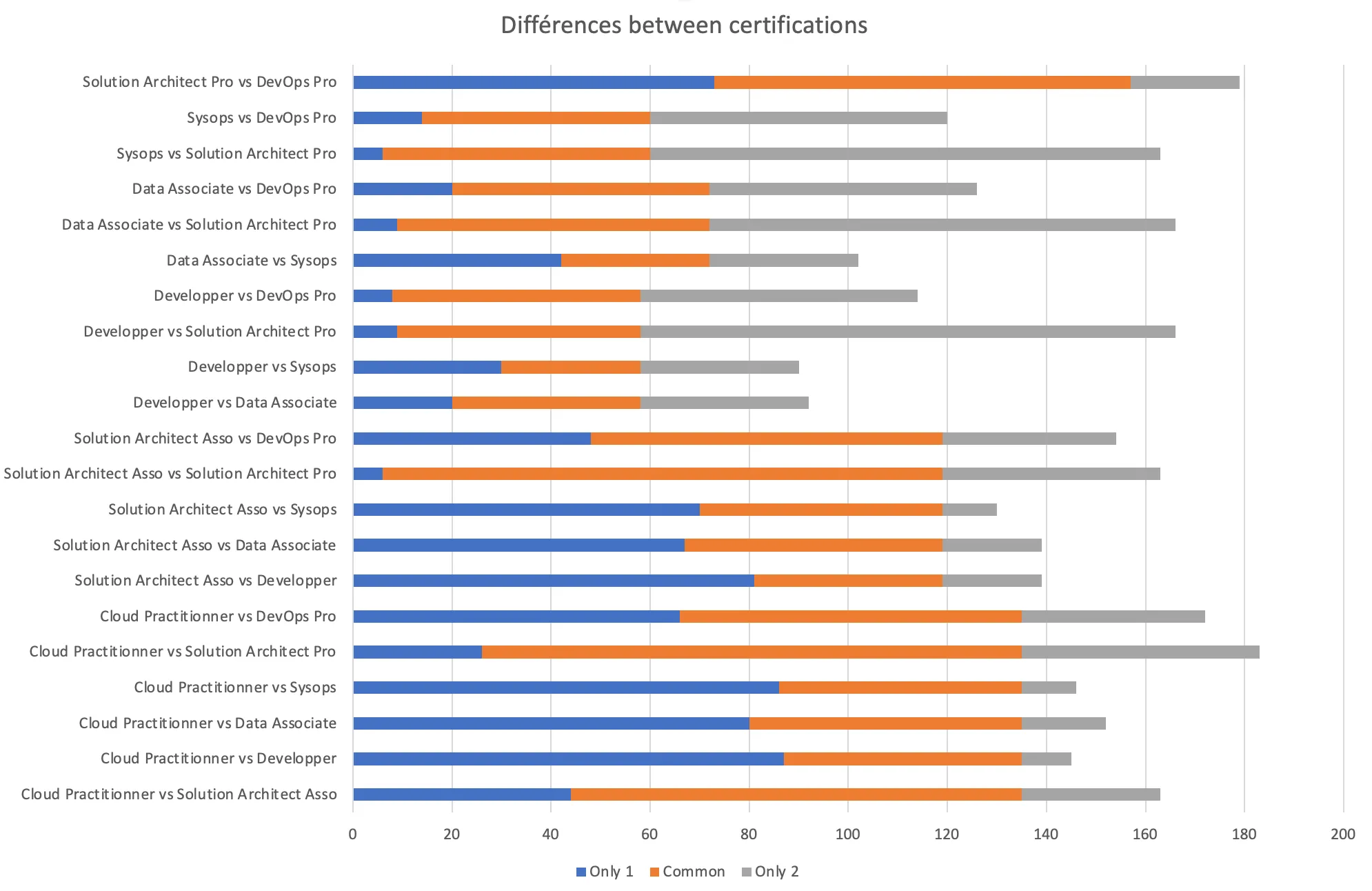My AWS Training and Certification journey
My AWS Training and Certification journey. I also give tips to help you for your future AWS Exams.
My working method for certifications
2. Use AWS question sets to train.
3. Manage your time and find your rhythm
4. Read a couple of answers at the same time
5. Don’t panic if you don’t have the results at the end of the exam
6. Try to pass beta certifications!
7. Don’t be unprepared or allow your colleagues to be!

- Minimum Knowledge Validation. Certification validates a certain level of expertise recognized by AWS, confirming that an individual possesses essential knowledge and skills in architecture and methodology, enabling them to provide valuable assistance to customers or colleagues.
- Self-confidence. As there is a lot of subjects, whitepapers, architectures, design, etc… to discover and know on AWS, it’s easy to be lost. The worst time for me is just after re:Invent, as I see too many interesting things. Certifications help me to calm down and keep one thing in mind: “Ok Sylvain, you are not an expert on all these interesting subjects, but you are not lost, you are still able to pass this exam and you are not an "impostor”.
- Professional Spotlight! With certification you are easily identified by new customers or new employers, even if they are not too technical.
Each time I pass an exam, I have new contact requests on LinkedIn for several weeks. - Creditability Support. As a final benefit, certifications can bolster your credibility and ensure your voice is taken seriously.
I passed AWS security specialty to be more heard by cyber security team at one of my customers. I have learned nothing new during my studies for this exam, but this certification reassured them and facilitated communication.
I register to the courses that are useful for my next certification, to read them during my studies.



- I didn’t start to study before the event, but I said to myself: “no problem, I will have it with my skills.
- The Jet Lag. 8 hours difference with France
- 3. The background noise of the re:Invent. Even if the best was done by AWS to have a quiet place to take the exam, it’s complicated to have no noises when you are in the same area with an event with thousands of people and an expo.

There is no recipe for this. You must find the method that suits you.
For single choice, we can often see 2 groups of similar answers. Only a few words make the difference. The aim is to first find the group of 2 “quite good” answers (50% of answers are removed), and then read carefully and in parallel the 2 remaining answers.
**Tips **: In the answer we always have the full name of services. If there is a mistake in the name, it’s quite sure that this answer is wrong. example: if you read “AWS S3” instead of “Amazon S3”, you can be pretty sure that the answer is wrong.

- Half price
- One retry included
- Drawback: not a lot of specific content to study
I planned to take the exam beginning of January 2024, to have time to study after Christmas, and after December, that is a crazy month in my customer’s office.
- Let it go
- Take it in December, with no time to study as only fewa few slots were still available in the next 5 days.
- If I pass it, wonderful! But it is unlikely to happen.
- I have only a few hours to study.
I need to optimize my time to increase my chance of passing. I read again the prerequisites for the exam, and I chose to focus on subjects that seem to be linked to dataOps job role. - What happens if I fail?
- I will take it for free one more time in 3 months.
- I will see a large set of questions and themes related to the certification.
-> It will give me valuable data for the retake.
- Stop all alarms on your phone.
I have an alarm at 13:50 to have time to have a coffee before going back to work after lunch. During my last certification, which have started at 13:30, I had the pleasure to hear my alarm …
Big discomfort with the proctor, and some acrobatics movements with my laptop to show him that I only stop the alarm. - Don’t forget to plug in your laptop after showing to the proctor your exam room.
Result: 5min before the end of the exam the laptop shutdown. Stress at the highest level to restart the computer, and more stress when the proctor that had problems to recover my exam session. I was close to restart the entire exam. - Put and EXPLICIT and LARGE WARNING about your exam on the door.
Even if it was written in red, one of my colleagues knocked on my exam room door. My heart forgot to beat for a few seconds.
I still don’t know who did this, but if I catch him …

- In a test center: simple and in a dedicated environment, everything is ready. You need to adapt to the required equipment, and you have no control over the environment. It’s like Software as a Service (SaaS).
- In the office: need to book a meeting room and adapt it (remove extra screens, move tables …). Environment is well known with its good and bad points.It’s like Platform as a service (PaaS).
- At home: you need to redesign your office room to comply with the requirements (remove screens, children drawings …). You must also tell your family to go outside during the test (ex: movie theater) to have a quiet place.It’s like Infrastructure as a service (IaaS), you can change nearly everything.

I even allow myself to take a little nap to rest my eyes before starting.

